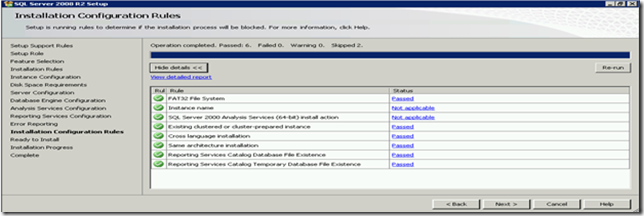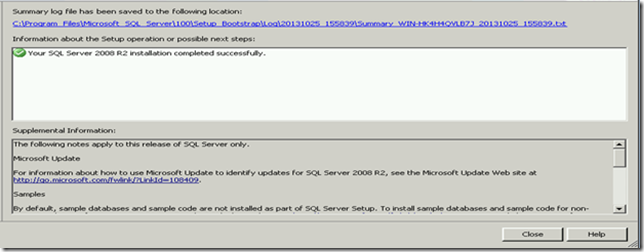Step-By-Step: Building A System Center Virtual Machine Manager Lab Part 1
*This post was authored by Garth Gorling. Correction of author is forthcoming
Virtualization, and more specifically Hyper-V , is awesome. While I am knowledgeable about Hyper-V, I'm always interested in learning more. I'm interested in having separate, isolated networks. I want users to be able to create VMS in one IP space but not another. I want to be able to manage my virtual environment (and all the virtual environments on my server) with more detail than just Hyper-V. In comes System Center Virtual Machine Manager which promises to do all I've asked for.
Getting started with System Center Virtual Machine Manager can become intimidating quickly: build some servers, install SQL, install SCVMM pre-reqs, install SCVMM itself. This post will assist in addressing those fears by walking you through the layout of a SCVMM lab environment.
Prerequisites
A physical server with at least 8 (prefer 16) GB of RAM
A HDD with at least 100 gig free space
Access to create at least 4 VMs. Ask your sys admin or boss if needed
Access to create or use a virtual switch to keep traffic segregated
This setup will allow you to have a fully functional lab environment. Please note that this setup does not leave much free space for VMs. If you want to actually use the VMs in the lab and not just test SCVMM then you will require additional RAM and storage.
My lab is setup as follows:
I have a Server 2012 R2 server (96 gigs of RAM, 12 cores and 2TBs of storage). It is used to build out series of independent, fictional “companies” to test various software applications and builds. This is the only physical resource utilized – everything else is virtual.
On the physical host are 4 VMs
DC: Server 2012r2, 2gig dynamic RAM, 25 gig HDD. This is just a plain domain controller to allow account creation/management through AD
VM2 – Gateway: Server 2012r2, 2gig dynamic RAM, 25 gig HDD. Since I want to use multi-tenants this will help manage the IP spaces and handle some routing and other network tasks
VM3 – SQL: DC: Server 2012r2, 2gig dynamic RAM, 25 gig HDD. SQL is needed for SCVMM and I chose to install on a separate PC to keep the load separate and (in a real world) allow for faster data manipulation
VM4 – SCVMM: 2gig dynamic RAM, 25 gig HDD. This is the machine on which SCVMM will be installed.
All are connected to an external virtual network.
Ok, so now that I have my disclaimer I will walk you through the part that seemed the most daunting to me: installing SQL. If you are new to System Center (as I am) then SQL is a very intimidating beast. Fear not – it is really to install and you don’t need to be a DBA to figure it out.
I will not cover creating a domain controller or domain joining the machines in the lab – take a look at TechNet for that as well if needed
STEP 1: Setting up SQL
Mount the ISO and clicking the “Setup” icon
Once launched click New installation.
NOTE: If you are using SQL 2012 you may get prompted to install updates: go ahead, it is automatic and required
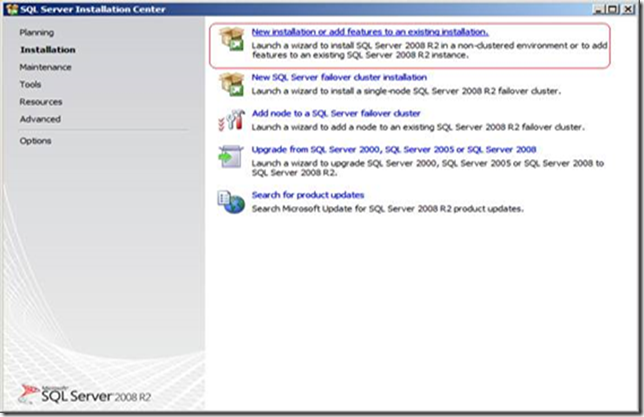
Next you will need to test the setup. The SQL installer will run a bunch of tests (up to 10 depending on the version of SQL you are using) to make sure the PC is ready. In my testing I had no errors but did get a warning that the Windows firewall was on and would need to be configured to allow communication between servers.
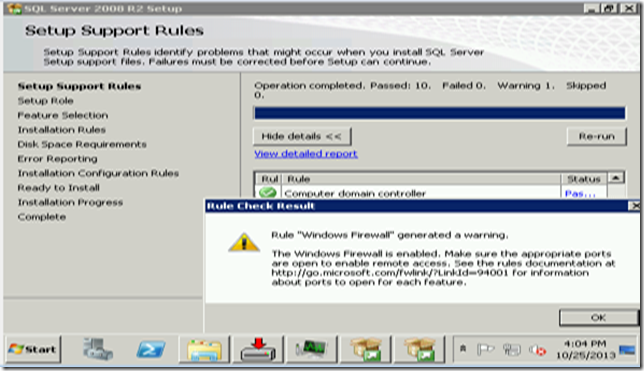
Once you pass the setup test you will have to pick how to install SQL. I chose all features with defaults
The SQL installer will again test the machine to make sure it meets the requirements for all the selected components. When it passes you will be able to pick the instance details. You can safely leave the settings at default if you want.
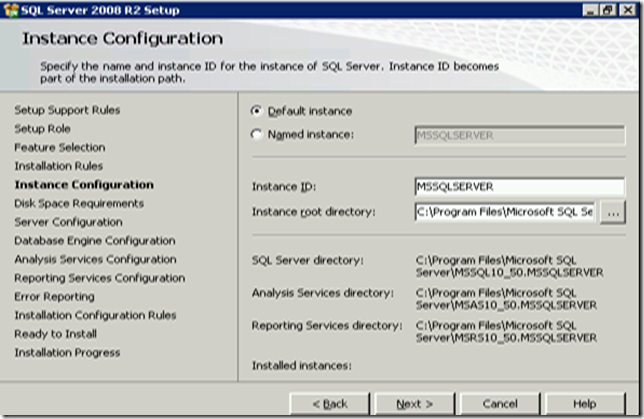
The next screen is a bit intimidating but it is simply asking if you want to create a series of accounts and configure them. In this lab we will leave them as default but they can be configured as needed in the real world
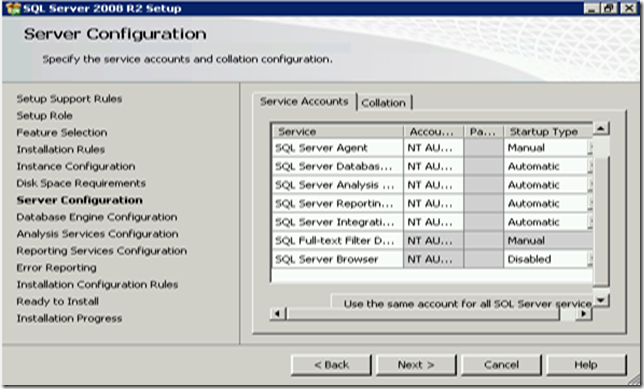
NOTE: At this point you can set collation which allows for multi-lingual support to be installed. The options are fairly straight forward. We are only using English in our lab so it is not needed here
For the Database engine you want to choose “Mixed mode” and enter (and document) the SA account password
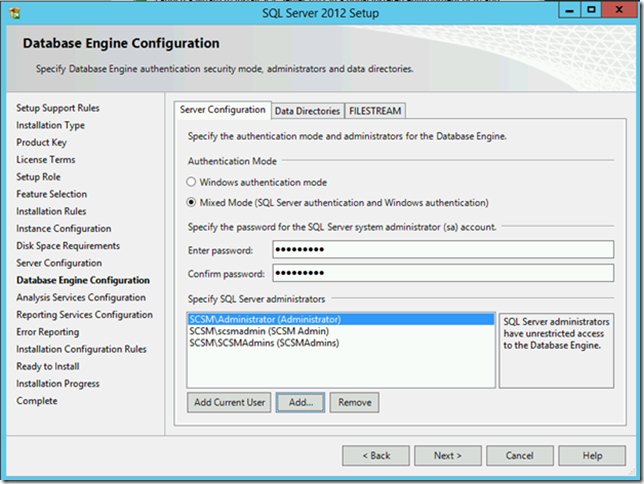
NOTE: We added the domain admin user and a group called SCSMAdmins. The administrator account needs to be explicitly defined for all the features to work correctly. The group makes managing users far easier – just add a new admin user to the group instead of updating SQL itself
On the next screen (Analysis Services) you will need to give the same users/groups permission as you did on the Database engine configuration
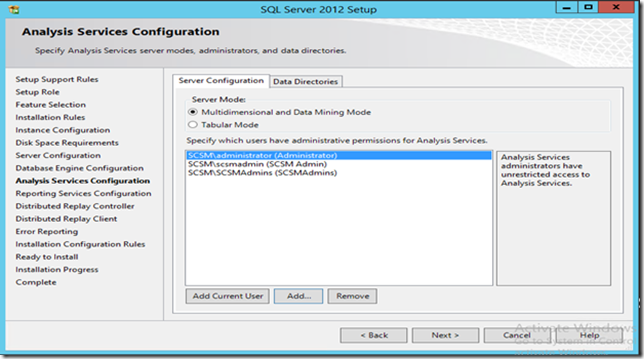
When prompted to setup reporting services I chose to install and configure reporting server
Now you will be at the Distributed Replay client screen. These settings can be left at default values for the lab but may need to be changed in the real world. If prompted to enter users you can only enter users (not groups). In this lab I entered the domain admin account and the scsm admin account
You can safely opt out of error reporting on the next screen
You will see the following once completed:
This build is very similar in all the System Center products but do read up for details on each as they may have slight differences. In the next article I will talk about how to install SCVMM itself.
